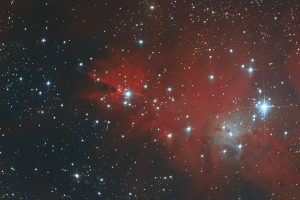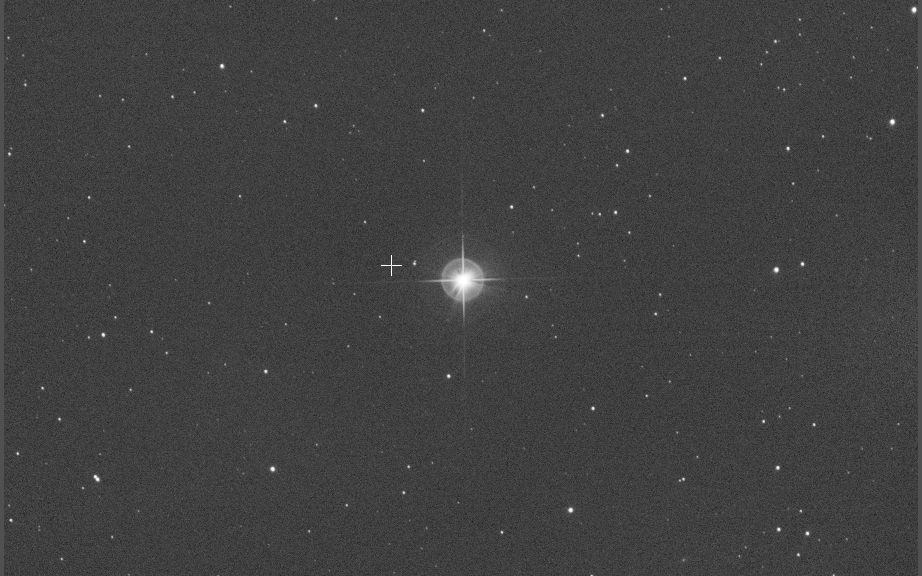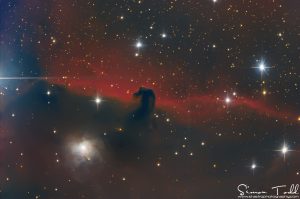When I moved to the Sky-Watcher Quattro telescope I noticed some bizzare halo’s around bright stars in my images, this was evident in both my Atik 383L+ CCD Camera as well as my QHY183M ColdMOS Camera when using the Quattro 8-CF at F4, if you browse my galleries you will see what I mean, and it was more noticable in my Narrowband images. Below is one of my recent images where you can see the halo around Magnitude 3.9 star 15 Mon in the Christmas Tree Cluster / NGC2264.

I contacted Baader back in February 2019 since all of my filters were Baader, and I noticed that the Halo was present in all of my filters but significantly less in Red, but more prevalent in Narrowband filters, so the logical cause would be the filters. Baader immediately dismissed this to be the fault of their filters and suggested that my Coma Corrector be the root cause.
Not convinced that the Coma Corrector was causing the issue, I did some research online and came across a brilliant page on the Astronomik website where they claim to have resolved the majority of the Halo issue, and after reading the following line from the page I was convinced the filters were my issue:
In recent years very fast optical systems have become popular for imaging. The energy in a filter induced halo grows exponentially as the f-ratio decreases. Additional to this, the smaller the FWHM band pass of the filter, the stronger the halo.
The above line described my issue perfectly so I mentioned this to Baader who again dismissed the possibility of it being their filters and again put the blame firmly to my optical train. Again not happy, I contacted Astronomik and Eric emailed me back very promptly and offered to send me out one of their 6nm Ha filters to test. A few days ago the filter arrived and I was able to perform some testing against the Baader filter also for comparison on the same star.
Since the star in my image above was of magnitude 3.9, I wanted to find something similar, so I found star Alhaud VI and proceeded to obtain 15x300S Exposures for each filter, and here are the results:


So as you can see the Baader filter shows a high amount of Halo around the bright star and the Astronomik filter does not, now if this was something to do with the rest of the optical train there would be evidence in the Astronomik filter also.
Now I agree there will be some reflection in the optical train, all that glass in the coma corrector, the glass on the camera etc, so I thought I would have a look at both images in a bit more detail, zoomed in on the stars there is what appears to be a slight halo in the same place on both images:


So both filters show the Inner Halo which in my opinion would not be visible in an image, but again clearly the Baader filter has some reflection issues happening as you can clearly see two additional Halos. The interesting thing about all three Halos is that the central one visible in both filters has no relationship to the distances between the other two in the Baader, however the two outer Halos on the baader are the same distance apart as the middle halo is from the star, so clearly this is some sort of reflection.
Conclusion:
Astronomik have done a fantastic job at eliminating Halo artifacts around bright stars, clearly the Baader filters are causing major Halo artifacts because if this was the optical train then it would be evident in the Astronimik filters also, I suspect that the Baader filters are not optimised for faster focal ratio imaging systems. I have provided this information to Baader and await a response from them.
Good job Astronomik Filters


